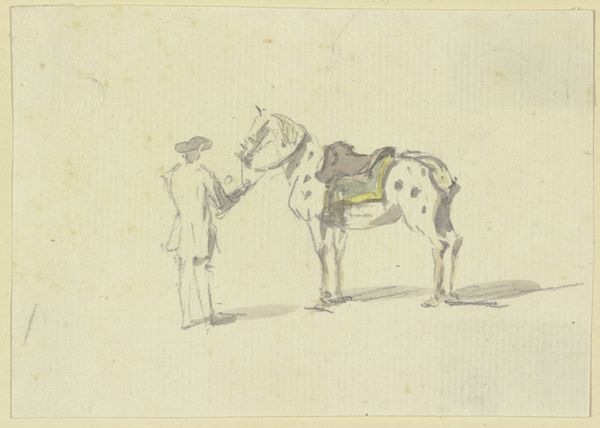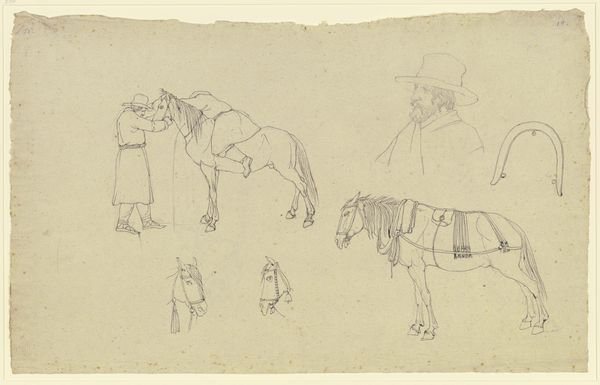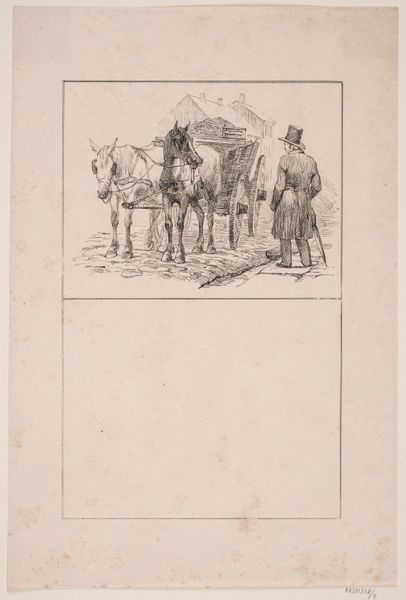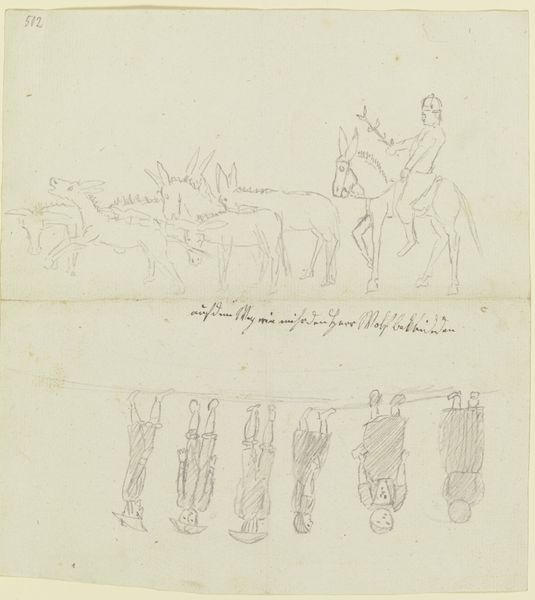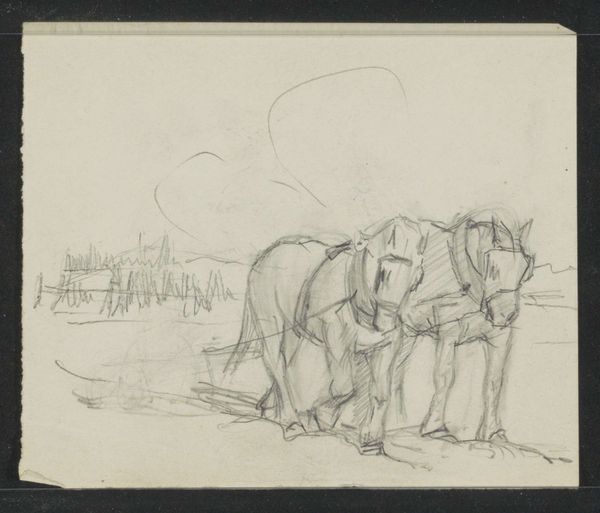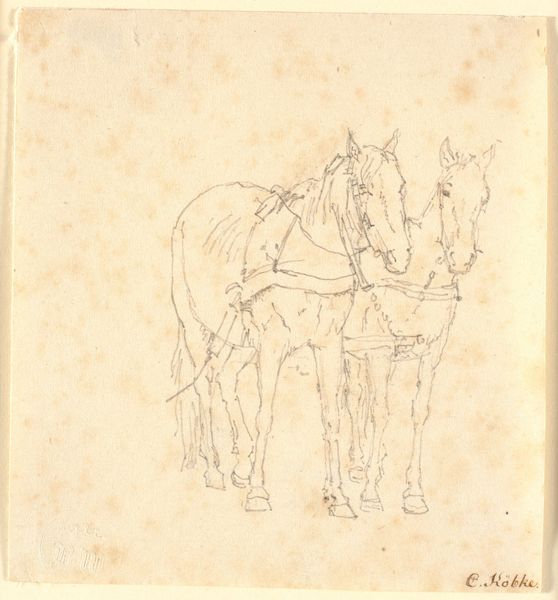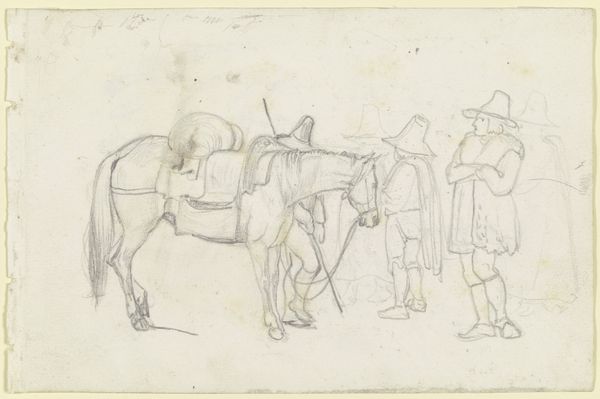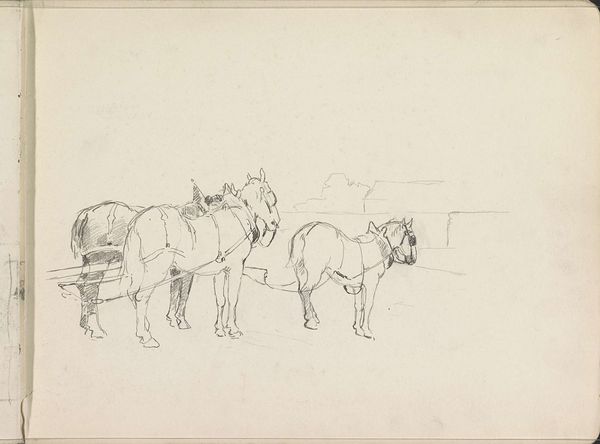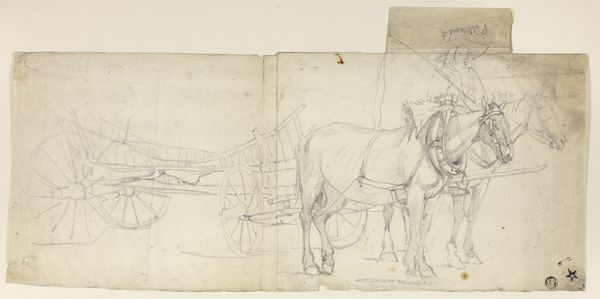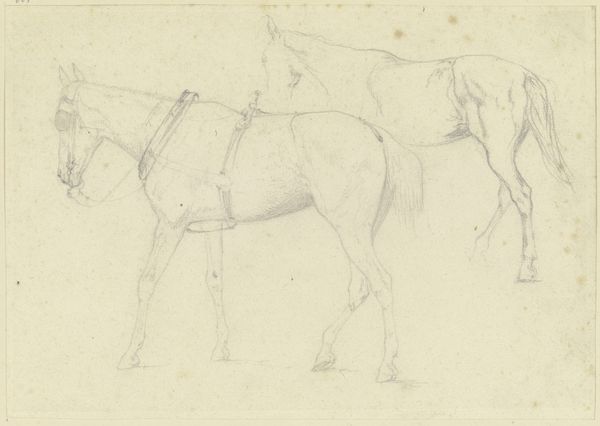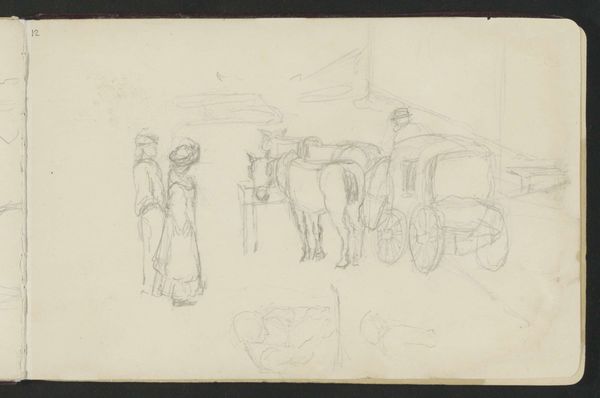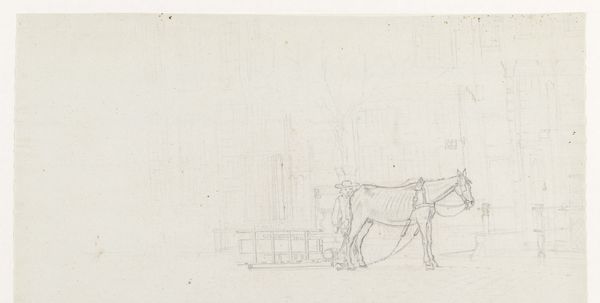
#
quirky sketch
#
incomplete sketchy
#
study drawing
#
personal sketchbook
#
idea generation sketch
#
sketchwork
#
dynamic sketch
#
horse
#
sketchbook drawing
#
storyboard and sketchbook work
#
initial sketch
Dimensions: height 198 mm, width 194 mm
Copyright: Rijks Museum: Open Domain
Adolf le Comte made this watercolour, 'Man met twee paarden voor een gebouw', or 'Man with two horses in front of a building', using delicate washes and fine lines, sometime around 1911. The translucence of the watercolour allows the paper to breathe, giving the scene a breezy, almost ghostly quality. See how the brown wash of the left horse bleeds into the page, creating a soft, undefined edge. Then notice the sparse linework outlining the building behind, it's barely there. These choices make the building feel less solid, more like a fleeting impression. I am reminded of the work of Eugène Delacroix, particularly his sketches of horses. Both artists capture the animal's energy and form with a kind of shorthand, relying on expressive lines and tonal washes rather than meticulous detail. Like Delacroix, Le Comte is interested in capturing a feeling, a moment, rather than providing a literal representation. It's all about that beautiful ambiguity, isn't it?
Comments
No comments
Be the first to comment and join the conversation on the ultimate creative platform.
